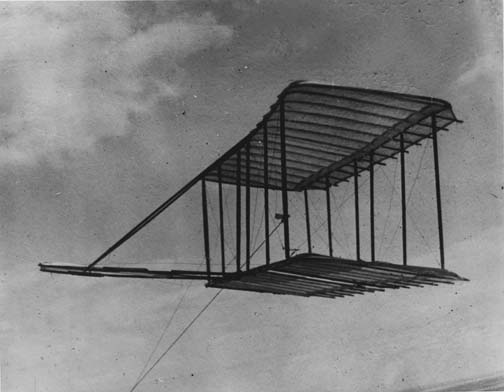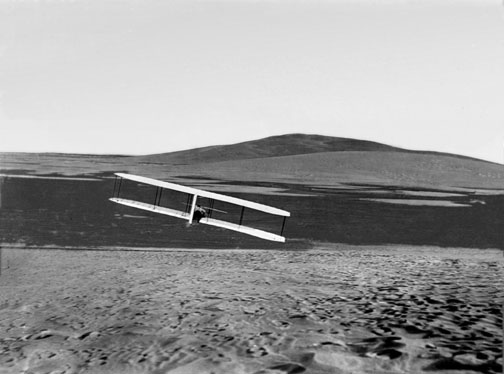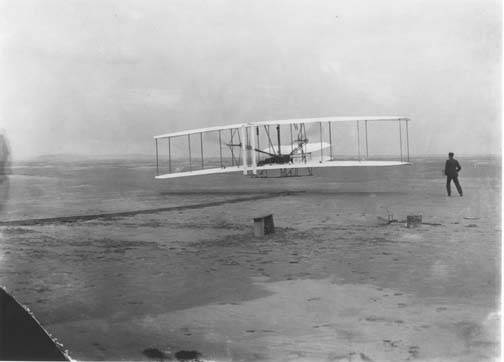|
AvStop Magazine Online Doing It Wright |
|
|
The Wrights found the trap door out of this unhappy method. Instead of designing and building whole craft, the two brothers constantly found ways to test individual components and subsystems of their designs. Early on, Wilbur realized that a plane could be controlled on its lateral axis (one wing tips up while the other tips down) if the wings of a plane were twisted, turning the craft into "an animated windmill." Instead of building an airplane with this design, the two brothers fashioned a 5-foot biplane kite. By flying the kite in the breeze, the two brothers were able to show that twisting the wings had the intended effect in causing the kite to roll. The identification of an effective method of lateral control is universally recognized as being one of the most important contributions the Wrights made to aviation, and was the idea protected by their patent issued May 22, 1906. Thus, it may be somewhat surprising to learn that when the brothers tested their first glider in 1900, in Kitty Hawk, N.C., the controls for twisting the wings were tied off, preventing any testing of this important breakthrough. |
 |


